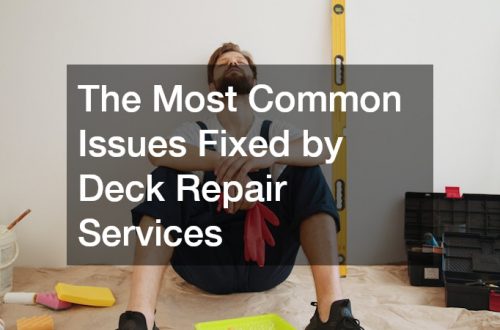
Are you considering a home renovation? They are messy, time-consuming, and costly. And don’t forget about the monthly fees for the self storage of all your belongings during the reno. Nevertheless, there are many reasons for the renovation.
What Is the Difference Between Remodeling and Renovation?
A remodel changes the form of a room, such as adding a new shower to an existing bathroom. In contrast, a renovation focuses more on restoring an old structure into good repair by fixing a creaky floor, for example, or a total kitchen renovation.
There are almost as many reasons to renovate as there are projects to do. Here are the primary reasons for home renovation.
To Increase Your Enjoyment of the Home
Although there are several good reasons to renovate your home, your enjoyment and comfort are the most important ones. Don’t renovate only for how it will impact the future sales price, as you may end up living in an uncomfortable showplace. Your comfort is more important than the money the improvements will make at the time of sale.
Repair A Safety Issue
There are some home renovation projects that cannot be ignored. Electrical problems, ac repair, roof leaks, or foundation cracks are some problems that must be repaired promptly to keep your family safe and prevent future expensive repairs.
Improve the Home’s Value
If you plan to sell the home in the near future, you may want to renovate part or all of it to get the most ROI when you put it up for sale. Some projects with the best immediate return are creating an “open concept,” updating the kitchen or bathroom, or replacing the front door.
Upgrade the Home’s Function
Perhaps you need more space or an additional bathroom to make things easier during those busy mornings. Does the man of the house want a man cave, or would you like an outdoor space for entertaining? A home renovation for an improved function is a good idea, as long as the upgrades don’t detract from the home’s value.
To Increase the Efficiency of the Home
New windows, HVAC services, and added insulation are some improvements that can decrease energy costs, paying for themselves over time. More energy-efficient homes are also more attractive to potential buyers since they know utility costs will be lower on that home.
Update the Home’s Style
Don’t update your home based on new trends. Older homes can have an outdated look, making them appear less attractive to buyers. It’s best to use timeless styles that denote style and sophistication.
Prepare The House For Resale
If your main objective is to sell the home, your choices should reflect what will most likely help with the potential sale. New garage door installations, neutral colors, upgrades to increase value, and the repair of any functional or cosmetic problems will get the house in prime condition for resale.
Steps to Renovating

Determine why are you remodeling
Decide on what areas of the home are to be remodeled
Apply for required permits
Get inspiration from styles or decor that appeal to you
Set your budget
Determine if the project will be a DIY or if you will hire a contractor
Choose materials
Most Renovations Will Typically Follow This Order of Work:
Strip out and removal
Structural work on the floors, ceilings, walls
Repair plumbing, heating, wiring, plastering, and flooring
Bathroom, kitchen fit-out
Interior decoration
Is It Better to Buy an Inexpensive House And Renovate?
The cost to remodel or renovate your home is less than buying a new home because it is done on a room-by-room basis. Renovating allows you to change your current home to meet your personal needs and expectations. A new home may have some of the features you want, but not all.
For an average 2,500-square-foot home, a complete home renovation can cost in the range of $15,000 to $200,000. A low-end renovation can cost $15,000-$45,000.
A complete kitchen renovation will allow homeowners to recoup about 59% of the cost. A new master suite will typically return 50%. But the highest ROIs come from less flashy projects.
What Home Improvements Add the Most Value?
Kitchen improvements — If increasing your home’s value is the goal, the kitchen is the best place to start. For a major upscale kitchen remodel, the national average ROI is almost 54%, meaning you can recoup approximately $68,000 after spending around $126,000.
What about a smaller kitchen renovation project? The average cost of a smaller kitchen remodel is about $21,000, and the average amount recouped is $17,000.
But if you have a small budget, there’s still hope to renew your kitchen. There are smaller projects that bring in significant returns on your investment.
Change the hardware — By far, the easiest and cheapest way to update your kitchen is to get new cabinet hardware. For old oak cabinets you can’t replace, choose a matte black pull that instantly brings cabinetry from the ’80s into the present day. Pulls are inexpensive, at about $5 each. Be sure to get a matching faucet, however—mismatched hardware looks odd and not well-thought-out.
Update your lighting — One of the best projects for a good ROI is changing the lighting in a kitchen. Lighting is noticed first when people walk into a room. If your lighting is updated, attractive, and blends well, it makes the whole space feel modern and updated. No need to call an electrician for all new wiring. Just swap out the old fixtures for a new, sleeker light instead.
Paint your cabinets — New kitchen cabinetry is costly and prohibitive for many. So what to do? Paint your cabinets. It is an easy, cost-effective way to upgrade your kitchen from stale oak boxes to something more modern. White cabinets are still the best, especially if your kitchen wall color is in a warmer tone. If the cabinets are in good condition, with no leaks under the sink, you can get to work. Remove the cabinet doors and hardware first and ensure everything is clean, so the paint goes on nicely, then prime, and paint.
Bathrooms improvements — Updated bathrooms also increase the value of your home. Here are some ideas.
New plumbing fixtures — Just as old fixtures date a room, new ones can make a space look modern. This is good for homeowners wanting to renovate their homes, as these fixtures are not expensive.
If upgrading the plumbing fixtures can be the only change you make to the space, choose fixtures that complement and do not clash with the rest of the bathroom. Ensure you match the rest of the colors in the room and the general style.
Vanity upgrades — If you have a larger budget, consider upgrading the entire vanity, including faucets, cabinetry, and sinks. Make sure to choose materials that will be more appealing to potential buyers. For example, granite and marble are usually top choices for countertops, while laminate looks dated.
A fresh coat of paint — Something as simple as a new coat of paint can make a big impact on the look of any room. This is particularly true if the space shows any sign of mildew or water damage. If this is the case, address the actual problem and not hide it behind primer and paint.
Painting is an excellent DIY renovation project, particularly in the bathroom, as it is a smaller space. Choose a neutral color that is appealing to more buyers.
Flooring — If you’re looking for a dramatic change, a flooring upgrade in your bathroom is a good option. The cost per square foot of bathroom flooring is on average, $2.50 to $4.00 plus labor costs unless you install it yourself. If you want to take the floors up a notch, you could install radiant heat mats under the tile, warming the floors after a bath or shower.
New bathroom floors—even with the addition of radiant heat—are one of the least expensive renovations you can do and will completely change the look, feel, and function of the room.
Energy-efficient updates — Your shower, sink, and toilet can be optimized for low flow, which means less water usage resulting in more savings on your water bill. It’s attractive for potential buyers too, so when you’re making changes to fixtures in your bathroom, choose low-energy options.
Lighting improvements — Lighting can make or break your décor. With so many of us working from home these days, we rely on artificial lighting most of the time. Also, when entertaining friends, family, and colleagues during the evening hours, the lighting needs to be up to the task. Any expensive décor will go unnoticed and unappreciated in a room with inadequate lighting, making your renovation efforts worthless.
Energy efficiency improvements — A home window tint, or solar window film, is a thin layer similar to film found on car windows. It blocks out ultraviolet rays, helping to control the flow of heat through your windows, thereby reducing energy costs. Also, choosing new energy-efficient appliances, such as a water heater or refrigerator, can significantly affect your monthly utility bills.
Curb appeal improvements — A coat of paint or roof cleaning can vastly improve the look of the property. Also, ensuring that the lawn is adequately manicured, dead tree branches trimmed off, and any debris or refuse removed is essential.
Things That Can Decrease Property Value
These things you have control over by renovating. A proper renovation of your home can increase its attractiveness and appeal, so consider the following if your home needs a little work.
Poor Exterior Paint
Your home’s exterior is the first thing someone sees. If your exterior paint is peeling, cracked, or faded, a prospective buyer will just drive by. Another negative is choosing an odd color for the exterior of your home. Most buyers tend to favor neutral colors like white, gray, beige, and cream. So choose your colors with care and repaint the exterior when necessary.
Deferred Maintenance
Have a list of serious repairs, such as a faulty HVAC system, a leaky roof, or damaged siding? These should be first on a list of renovations needed. Ignoring them will only decrease your home’s property value. In addition, it’s often more expensive to repair these issues the longer you wait. So contact a local plumber or roofing contractors to ensure you don’t incur any more expense than necessary.
An Unsightly Yard
It’s called curb appeal for a good reason. If your yard is laden with junk or in poor condition, expect your property value to decrease. On the other hand, an elaborate landscape or a koi pond can also hurt your property value as many homeowners do not want additional maintenance.
Too Much Personalization
When a buyer tours a home, they take note of all the projects they’ll need to do—things such as removing wallpaper, painting over odd colors, or replacing unconventional fixtures. If you have offbeat tastes, ensure they can be easily changed, removed, or reversed if you decide to sell.
A Garage Conversion
Converting your garage to a home office, gym, playroom, or anything else besides a place to park vehicles is a sure way to lower your property value. The vast majority of potential buyers want a space for their cars and yard maintenance equipment. If using your garage for any other purpose, do so in a way that makes it simple to convert back to a conventional garage.
Too Much Carpet
Carpet tends to retain odors, shows damage easily, and can be challenging to clean. In addition, many buyers are turned off by specific colors. If you are renovating, a better flooring option is laminate or hardwood. A study revealed that 54 percent of home buyers are willing to pay more for hardwood or high-quality laminate flooring.
When Should You Renovate Your Home?

How do you know when the time is right for a renovation? Here are some for sure signs.
- If your floor needs replacing
- The roof leaks
- The home feels too empty or too crowded
- The paint begins to chip and looks dingy
- When termites begin infesting the home
- The kitchen and bathrooms look old and outdated







